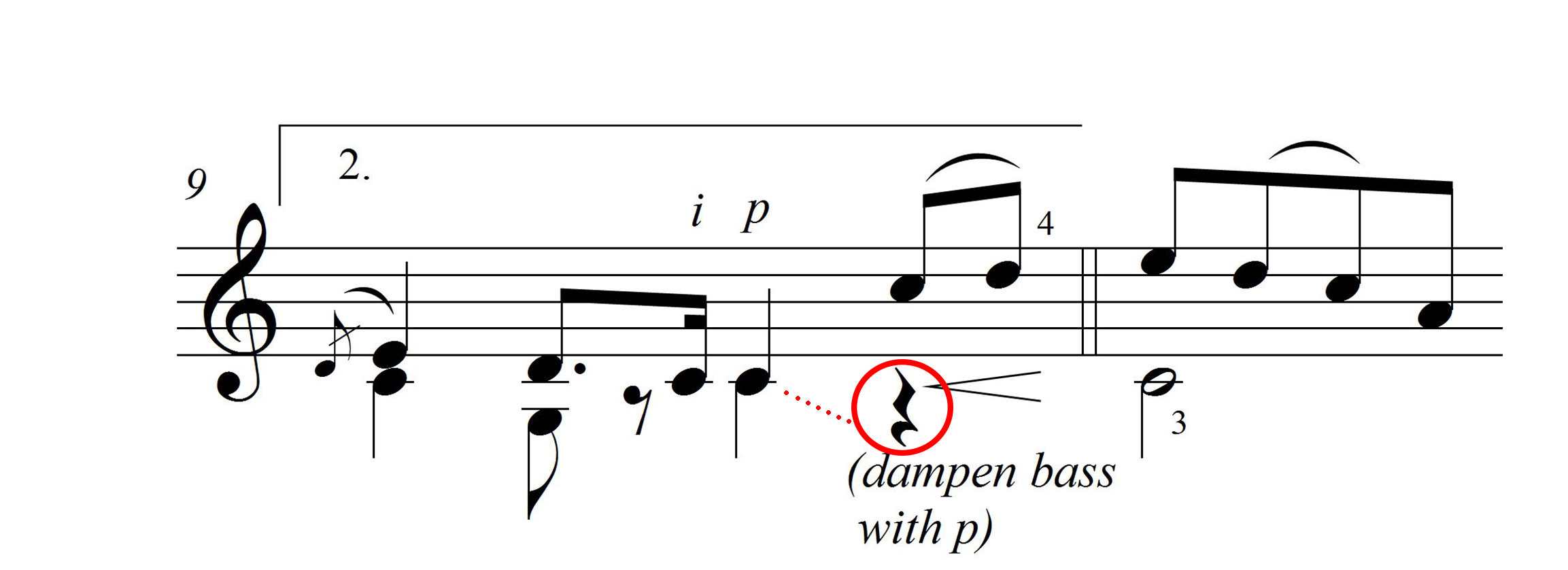This is an arrangment of two traditional Scottish Tunes—Bottom of the Punch Bowl and My Nanie O (or When Bidden to the Wake) merged into one. The work is also found in the Shearer Method Book III: Learning the Fingerboard, arranged as a duet and has been arranged in a larger suite for guitar ensmeble.
Legato Fingerings
The tunes are published in various anthologies as just simple one-line (monophonic) melodies. They are presented here with slight modification in a homophonic setting as melody with added accompaniment. To maintain the fluid connection from note to note, called legato playing, be sure to closely follow all fingerings—both left and right.Left-hand fingerings
Hold fingers are very common and indicated by a finger number followed by a dash (e.g. 3-). These indicate to keep a finger on a fret because it will be used shortly again after alternating with a note(s) on another string. For example at m. 12:


Squeeze fingers are less common and indicated by a recurring finger number on two consecutive notes, frequently in a scalar decsent or acsent. At m. 6—in the bass, 3 on F “squeezes” down to E, because 2 on A is needed in the melody just before.

Here, 3 on F “squeezes” down to E on fret II, while 2 holds on “A.” Thouhgh slightly uncomfortable. this is necessary to sustain “A” in the melody into the 2nd beat.

correct
incorrect
Right-hand fingerings
Sympathetic movement
Playing legato in the right hand improves the rhythmic flow. To that end, use as much sympathetic fingering as possible. It’s found right off in the opening of the first theme, connecting the first and second measures. Sympathetic means that flexing one finger, pulls on another finger(s) to flex.
To focus on the sympathetic, practice this same passage, right-hand alone on open strings, making sure a, m-i feels smooth and connected:

single-string alternation with I & P
To achieve the “snappy” Scottish dotted-eighth/sixteenth rhythm, it’s effective to alternate i, and p on a single string. This rhythm appears at many of the Punch Bowl cadences:
If you’re not used to alternating p and i on the same string, it may feel a bit clumsy. As with all things, it becomes fluid and natural with practice. Repeatedly practice the passage on open strings. If necessary, isolate the i,p movement on (5). When confident, practice the passage as written with both left and right hands.

Once you’ve coordinated the i,p alternation, consider dampening the open D string with m, as you play the 3rd-beat “A” with p. After immediately playing i, m naturally and sympathetically moves to dampen (4), Notice the technique and its effect demonstrated in the video.
Bass Dampening
There are a few other areas where bass dampening is needed—the cadences at m. 9, 17, & 34 on the 4th beat and also on the 4th beat of m. 23, to provide focus on the Position V solo in m. 24. Dampen all of theses bass strings with p.




0 Comments